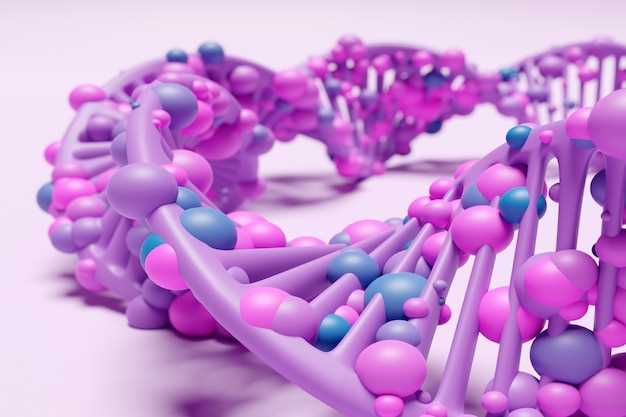
Are you looking for information on the potential interaction between Levothyroxine and Estradiol? You’ve come to the right place!
Levothyroxine is a medication used to treat underactive thyroid (hypothyroidism), while Estradiol is a form of estrogen hormone therapy. Understanding how these two medications interact is crucial for your health.
Discover the facts, risks, and recommendations regarding the interaction between Levothyroxine and Estradiol with our expert resources and guidance.
Understanding the Interaction
Levothyroxine and estradiol are two commonly prescribed medications that can interact with each other. Levothyroxine is a synthetic form of the thyroid hormone thyroxine, commonly used to treat hypothyroidism. Estradiol, on the other hand, is a form of estrogen hormone commonly used in hormone replacement therapy.
- When these two medications are taken together, there is a potential for an interaction that can affect the absorption and effectiveness of levothyroxine.
- Estradiol can decrease the absorption of levothyroxine in the gastrointestinal tract, leading to reduced levels of the thyroid hormone in the bloodstream.
- This interaction can result in symptoms of hypothyroidism in individuals who depend on levothyroxine for proper thyroid function.
- It is essential for healthcare providers to be aware of this interaction and monitor patients closely when these medications are prescribed together.
Understanding the Interaction
Monitoring the interaction between levothyroxine and estradiol is crucial to ensure optimal patient outcomes. These two medications can interact in a way that affects their effectiveness and potentially leads to adverse effects. Levothyroxine, a thyroid hormone replacement medication, is commonly prescribed to treat hypothyroidism, while estradiol, a form of estrogen, is often prescribed for hormone replacement therapy.
When taken together, levothyroxine and estradiol can interfere with each other’s absorption and metabolism in the body. This can result in reduced efficacy of one or both medications, leading to suboptimal treatment outcomes. Monitoring the interaction involves regular assessments of thyroid function and hormone levels to ensure that both medications are working effectively and that the patient’s health is not compromised.
| Key Points: |
| 1. Monitoring thyroid function and hormone levels is essential. |
| 2. Adjustments to medication doses may be necessary. |
| 3. Regular communication with healthcare providers is important. |
By understanding the interaction between levothyroxine and estradiol, healthcare providers can better manage patient care and optimize treatment outcomes. It is important for patients to be aware of this interaction and communicate any changes in symptoms or side effects to their healthcare provider promptly.
Importance of Monitoring
Monitoring the interaction between levothyroxine and estradiol is crucial to ensure the safe and effective treatment of hypothyroidism and other conditions. Regular monitoring can help detect any potential changes in hormone levels or medication effectiveness, allowing healthcare providers to adjust treatment plans accordingly.
By closely monitoring patients who are taking both levothyroxine and estradiol, healthcare professionals can identify any adverse effects or complications that may arise from the interaction between these medications. This proactive approach can help prevent serious health issues and optimize the overall quality of care for patients.
Overall, the importance of monitoring cannot be overstated when it comes to managing the interaction between levothyroxine and estradiol. It is essential for healthcare providers to closely monitor patients, conduct regular check-ups, and adjust treatment plans as needed to ensure the best possible outcomes for their patients.
Risk Factors

When considering the interaction between levothyroxine and estradiol, there are several risk factors that should be taken into account. Some of the key risk factors include:
- Age: Older individuals may be at a higher risk for experiencing interactions between these medications.
- Medical History: Patients with a history of thyroid disorders or hormonal imbalances may be more susceptible to the effects of this interaction.
- Dosage: The dosage of both levothyroxine and estradiol can play a role in the likelihood of experiencing an interaction.
- Duration of Use: Long-term use of these medications may increase the risk of developing interactions.
It is important for healthcare providers to carefully assess these risk factors and monitor patients closely when prescribing levothyroxine and estradiol together to ensure the safety and efficacy of treatment.
Factors Contributing to Interaction
1. Metabolism: Both levothyroxine and estradiol are metabolized in the liver through cytochrome P450 enzymes. Co-administration may result in competition for metabolism, leading to altered plasma concentrations of both medications.
2. Binding Proteins: Levothyroxine is highly protein-bound in the plasma, as is estradiol. When both medications are taken together, they may compete for binding to plasma proteins, affecting their free concentrations and pharmacological effects.
3. Renal Function: Impaired renal function can affect the clearance of both levothyroxine and estradiol, leading to potential drug interactions if not monitored closely.
4. Dosing Regimen: The dosing schedules of levothyroxine and estradiol should be carefully coordinated to avoid peaks and troughs in plasma concentrations, which could impact their therapeutic efficacy.
5. Genetic Factors: Individual genetic variations in drug metabolism pathways and drug transporters can influence the interaction between levothyroxine and estradiol, necessitating personalized dosing and monitoring.
Populations at Risk
Understanding the populations at risk for levothyroxine and estradiol interaction is crucial for effective management. Several factors can influence the likelihood of this interaction occurring, including:
Age
Elderly patients may be at a higher risk due to age-related changes in drug metabolism and clearance rates. Close monitoring of drug levels and symptoms is recommended in this population.
Medical Conditions

Patients with thyroid disorders, hormone imbalances, or other endocrine issues may be more susceptible to the effects of the interaction. It is important for healthcare providers to consider these conditions when prescribing medications.
| Factor | Impact |
|---|---|
| Concomitant Medications | Certain medications can potentiate the interaction between levothyroxine and estradiol. A thorough review of a patient’s medication list is essential to identify potential risks. |
| Genetic Variability | Individual genetic differences can affect drug metabolism and response, influencing the risk of interaction. Genetic testing may help identify patients at increased risk. |
By understanding the populations at risk and the factors that contribute to the interaction between levothyroxine and estradiol, healthcare providers can implement appropriate management strategies to ensure patient safety and optimize treatment outcomes.
Management Strategies
When managing the interaction between levothyroxine and estradiol, it is essential to work closely with healthcare providers to ensure the appropriate monitoring and adjustment of medication regimens. Here are some key strategies to consider:
- Regular Monitoring: Healthcare providers should monitor hormone levels regularly to assess the impact of the interaction and make necessary adjustments to medication dosages.
- Individualized Treatment Plans: Tailoring treatment plans to each patient’s unique needs and health status can help optimize outcomes and minimize the risk of adverse effects.
- Communication: Open and honest communication between healthcare providers and patients is crucial in managing the interaction effectively. Patients should be encouraged to report any symptoms or changes in health status promptly.
- Education: Providing patients with clear information about the interaction between levothyroxine and estradiol, as well as the importance of adherence to treatment regimens, can help empower them to take an active role in their healthcare.
- Collaboration: Collaboration among healthcare providers, including endocrinologists, gynecologists, and primary care physicians, can help ensure comprehensive and coordinated care for patients taking these medications.
Physician Recommendations
Physicians play a crucial role in managing the interaction between levothyroxine and estradiol. Here are some key recommendations for physicians:
- Monitor hormone levels: Regular monitoring of thyroid hormone levels and estradiol levels can help identify any potential interactions early on.
- Adjust dosages carefully: Physicians should carefully adjust the dosages of levothyroxine and estradiol based on the patient’s hormone levels and symptoms.
- Educate patients: It is important for physicians to educate patients about the potential interaction between these medications and the importance of adherence to the prescribed treatment plan.
- Consider alternative therapies: In some cases, alternative therapies or medications may be considered to minimize the risk of interactions.
- Consult with specialists: If needed, physicians should consult with endocrinologists or other specialists to optimize the management of hormone therapy in patients taking levothyroxine and estradiol.
By following these recommendations, physicians can effectively manage the interaction between levothyroxine and estradiol and ensure the best possible outcomes for their patients.
